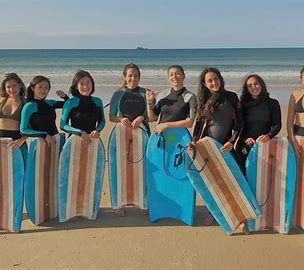
Surfing Gear for Beginners: What You Really Need to Start
Share
Surfing is one of the most exciting and rewarding water sports out there. The thrill of catching your first wave is an unforgettable experience. However, getting started in surfing can feel a bit overwhelming, especially when it comes to choosing the right gear. With so many options out there, it's easy to wonder what you really need to hit the waves for the first time. In this blog, we’ll break down the essential surfing gear every beginner needs to start their journey and get the most out of their time in the water.
1. Wetsuit
A wetsuit is essential for staying warm and comfortable while you surf, especially if you’re surfing in cooler water. A wetsuit keeps your body insulated by trapping a thin layer of water between the suit and your skin, which your body warms up, keeping you comfortable and protected.
- Thickness: Wetsuits come in various thicknesses, typically measured in millimeters (mm). The thickness you need depends on the water temperature you’ll be surfing in:
- Cold Water (50°F to 60°F / 10°C to 16°C): A 4/3mm or 5/4mm wetsuit will provide good insulation in colder water.
- Cool Water (60°F to 70°F / 16°C to 21°C): A 3/2mm wetsuit is a good choice for slightly cooler waters.
- Warm Water (70°F to 80°F / 21°C to 27°C): In warmer conditions, you can get away with a thinner 2/2mm wetsuit or even a spring suit.
- Hot Water (Above 80°F / 27°C): In very warm waters, you may only need a rash guard or swimwear.
- Fit: It’s essential that your wetsuit fits snugly, but not too tight. A good-fitting wetsuit should feel like a second skin, allowing for freedom of movement without allowing too much water to enter the suit. Be sure to check the neck, wrist, and ankle seals to ensure they’re snug without causing discomfort.
2. Rash Guard or Surf Shirt
A rash guard is a lightweight, form-fitting shirt designed to protect your skin from irritation caused by the surfboard, the sun, and the saltwater. It’s especially important if you’re surfing in warmer conditions where a wetsuit isn’t necessary.
- Protection from the Sun: Rash guards also offer excellent UV protection, keeping you safe from sunburn while you’re out on the water.
- Comfort: Rash guards are made from quick-drying, breathable materials that keep you comfortable throughout your surf session.
3. Sun Protection
Spending hours in the sun can lead to sunburn and long-term skin damage, so it’s crucial to protect your skin while you surf. Along with wearing a rash guard, make sure to use a high SPF, waterproof sunscreen to protect your face, neck, and any other exposed skin.
- Waterproof Sunscreen: Look for a sunscreen that is water-resistant and designed specifically for outdoor activities, so it won’t wash off in the water.
4. Surfing Booties (Optional)
If you’re surfing in colder water or areas with rocky or sharp reefs, surfing booties can offer extra warmth and protection for your feet. They also provide grip, which is important when paddling out or standing on a slippery surface.
5. Surf Bag
A surfboard bag is essential for protecting your board when traveling or storing it. A good bag will protect your surfboard from scratches, dings, and UV damage, and it can also help with transporting your gear to and from the beach.
- Board Bag vs. Board Case: A lightweight board bag is perfect for daily use and light travel, while a board case offers more protection and is ideal for longer trips or flying.
Happy surfing! 🌊
